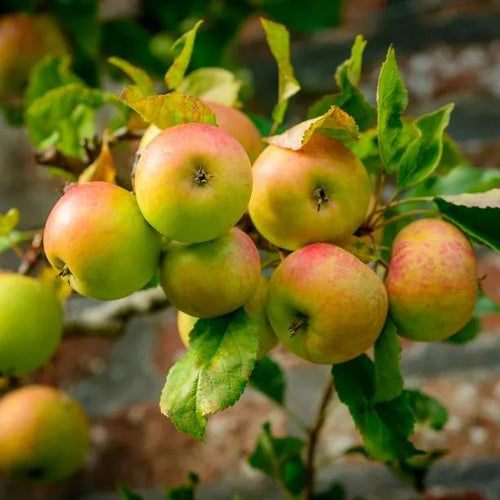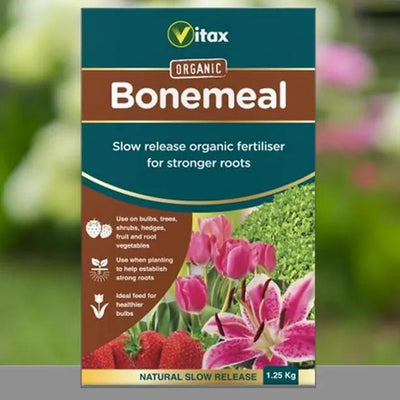Blenheim Orange Apple Trees
Blenheim Orange apple trees produce early-mid season eating apples that also cook well. It's a handsome apple, flushed red/orange, sometimes with stripes all on a yellow green skin and some fruit can have little golden blown spots and markings.
As an eater, this large, flat shaped apple has quite a soft bite with a lovely flavour, slightly nutty, that goes tremendously well with cheese for dessert. They taste best when they have ripened off the branch for about 2 weeks.
We think the flavour is even better when the apple is cooked and very few apples make an Apple Charlotte as well as a Blenheim Orange.
This is a really vigorous tree and although it can be a bit slow to start fruiting, mature trees will crop so heavily that they need to have their fruit thinned to control their biennial habit.
Browse our range of apple trees, the full variety of fruit trees, or read our guide to buying the right apple tree.
Features
- Eating: Sweet, nutty flavour with a crumbly texture that goes very well with cheese.
- Cooking: Bakes to a firm purée: slices on top of a pie will keep their shape.
- Partial Tip Bearer: suitable for cordons & training on wires.
- Tree's growth habit: Strong vigour. Spreading form with thick branches.
- Recommended for the North & Scotland
-
Harvest: From late September to early October.
-
Store & ripen in a cool, dry place: Until November.
- RHS Plants for Pollinators
- RHS Award of Garden Merit
Rootstocks:
All of our Blenheim Orange trees are grown on MM106 rootstocks, except for the cordons, which are grown on M9 rootstocks.
Pollination Partners for Blenheim Orange:
Your trees are self sterile triploids: their flowers must be pollinated to make any fruit and they cannot pollinate other trees.
Blenheim Orange is in pollination Group D.
This means that they can be pollinated by other apple trees in pollination Groups C, D and E.
This tree's flowers have poor frost resistance.
See our Guide to Apple Tree Pollination for a full list of partners & more tips about pollination.
Blenheim Orange Disease notes:
Disease resistance: Mildew (excellent), Fireblight, Brown Rot.
Disease susceptibility: Scab.








 Secure, One-Tap Checkout
Secure, One-Tap Checkout
 Hand Picked, Delivered to Your Door!
Hand Picked, Delivered to Your Door! 1 Year Bareroot Guarantee
1 Year Bareroot Guarantee










